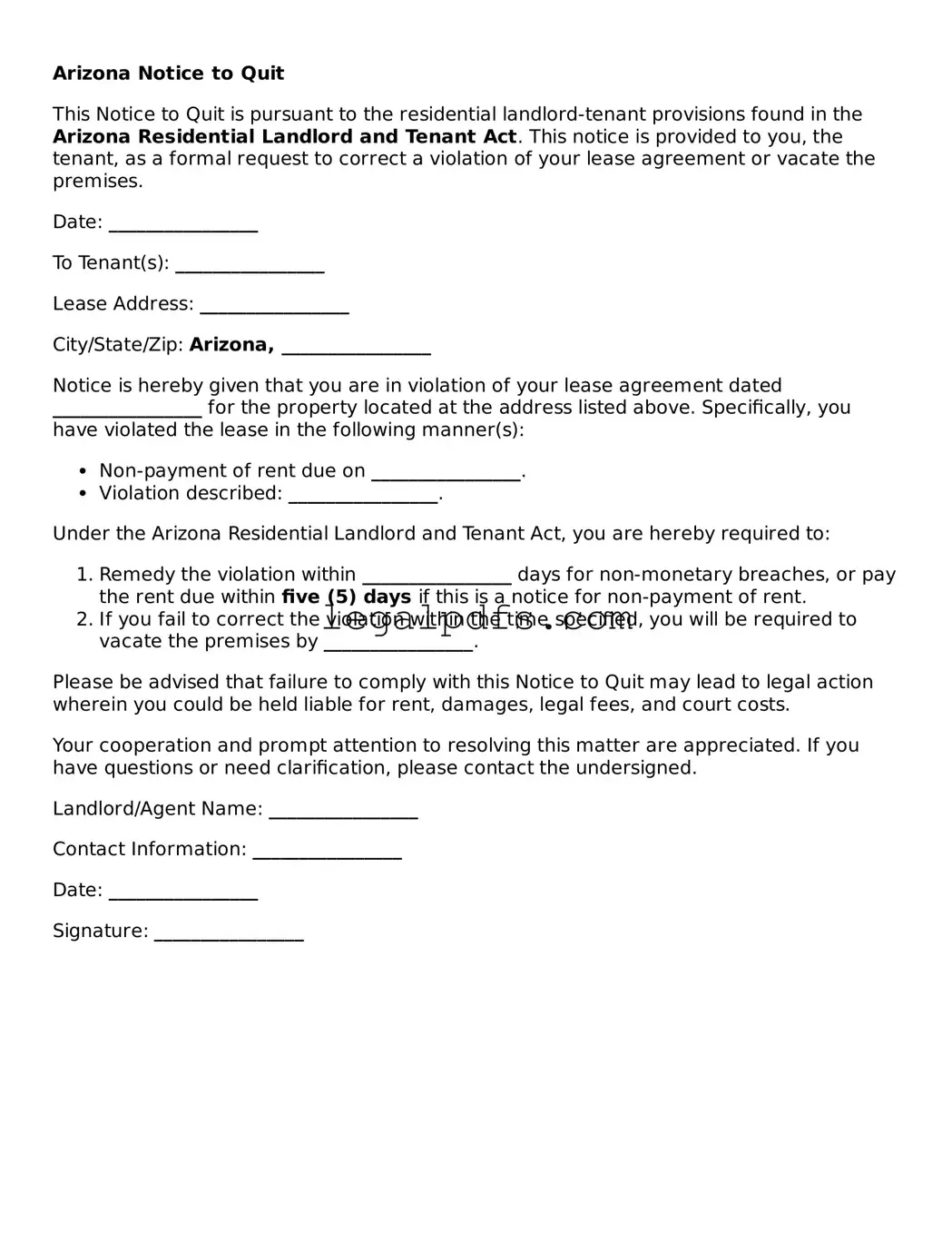What is an Arizona Notice to Quit form?
An Arizona Notice to Quit form is a legal document used by landlords to notify a tenant that they must either rectify a lease violation or vacate the property within a specified period. This notice can address various issues, including non-payment of rent, violations of lease terms, or other behaviors not permitted under Arizona law or the rental agreement.
How much time does a tenant have to respond to a Notice to Quit in Arizona?
The amount of time a tenant has to respond to a Notice to Quit in Arizona depends on the reason for the notice. For non-payment of rent, the tenant has five days to pay the rent or vacate the property. If the notice is due to a lease violation, the tenant typically has ten days to correct the violation or leave. It's important to consult the specific notice or local laws, as these timeframes can vary.
Can a tenant legally contest a Notice to Quit in Arizona?
Yes, tenants can legally contest a Notice to Quit in Arizona. If a tenant believes the notice was unfairly given or disputes the claims within it, they may have the right to challenge the notice in court. To do this, the tenant should seek legal advice to understand their rights and the appropriate steps to take.
What happens if a tenant ignores a Notice to Quit in Arizona?
If a tenant ignores a Notice to Quit in Arizona and does not remedy the situation or vacate the property within the specified timeframe, the landlord may proceed with a formal eviction process. This entails filing a lawsuit in court, and if the landlord wins, the tenant could be legally forced to leave the property and may be responsible for the landlord's legal costs and any outstanding rent or damages.
Is it mandatory for a landlord to provide a written Notice to Quit in Arizona?
Yes, it is mandatory for a landlord to provide a written Notice to Quit in Arizona. Arizona law requires landlords to give tenants written notice for non-payment of rent, lease violations, or other grounds for eviction. This notice must clearly state the reason for the eviction, give the tenant the opportunity to correct the issue if applicable, and specify the date by which the tenant must comply or vacate.
Does the Arizona Notice to Quit form need to be notarized?
No, the Arizona Notice to Quit form does not need to be notarized. However, it must be properly served to the tenant either in person, by certified mail, or by leaving it at the tenant's residence in the presence of a competent household member. Proper service ensures the tenant has officially received the notice, an important step before any further legal action can be taken.
Where can I find the Arizona Notice to Quit form?
The Arizona Notice to Quit form can be found through various sources, including legal services websites, Arizona court websites, and sometimes at local libraries or government offices. It's crucial to use a current form that complies with the latest Arizona landlord-tenant laws to ensure its validity and effectiveness in the given situation.
